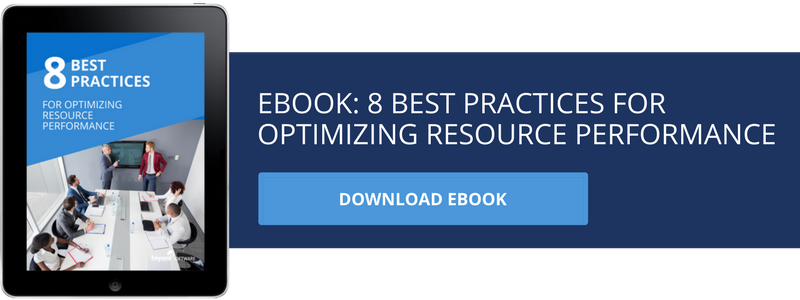A significant concern for any professional services provider arises when the services they are providing don't track with their client's needs or expectations. Even more concerning are circumstances when the professional's big-picture metrics don't mesh with or completely overlook the actual client requirements of the project itself. Without clearly defined reporting metrics and dashboards that track and connect all relevant project data, any professional can find themselves laboring towards a round design for their client's very square project.
The Right Metrics Matter
"Traditional" metrics, those accepted and relied upon by specific industries, are "big picture" measures because they apply across whole industrial sectors. Every industry participant uses them for the same purposes. For project-based work, the ubiquitous metrics are "on time" and "on budget," and every project-based professional tracks all activities based in part on those two critical factors.
Additionally, and also fairly obviously, the relevant metrics in one industry don't fit in other industries. An architect's standards of measurement aren't the same as those for a medical device designer, for example. Accordingly, each separate profession also maintains a roster of metrics that are specific to it, and its corps of professionals adhere to those measurements as their guides to successful project completion.
Finally, and perhaps most importantly, no two clients are the same, nor do clients approach their projects with identical sets of metrics in mind. Therefore, it's critical for the professional to both understand and measure for the metrics that achieve the client's ultimate goals. (A client asking for a red facade may get a perfectly adequate facade that is still a failure if it's blue.) For project professionals, ensuring their work achieves both professional standards AND their client's ultimate goals often rests on how well they incorporate their client's goals into the project's metrics and measurements.
How Inadequate Metrics Cause Failed Projects
Consequently, it is when individual projects require more finely nuanced metrics that aren't covered by traditional or industry-specific measuring guides that problems can arise for project-based professionals in any industry. Sometimes these fine-grained project details aren't developed into measurable metrics. Other times, project workers treat these nuances as intrinsic to or incremental within other, broader measurements, and assume that they have been met when that more significant element is complete.
There are several reasons why client and professional differentiations can cloud the metric messaging process. The two prevalent causes, however, are common in all industries:
- There is often a (sometimes sizable) gap between what the professional will produce and how the client will measure its success. Many clients are not familiar with either the logistics of the professional's job or the intricacies of the project; they often impose a simplistic "success measurement" strategy on the project, and then only track those details they understand.
- Clients often lack comprehension about the mercuriality of project details. Many don't know why schedules and budgets are off course unless they get relevant information - both the decision and the evidence supporting the decision - that justifies those alterations.
Examples of Inadequate Metrics in the IT Industry
When IT is involved, the consequence of insufficient understanding of key project metrics can lead to the failure of the project to achieve its intended goals. If the dominant metrics are limited to "on time and on budget," then, from the client's perspective, the project is successful after installation of the entire system comes in on budget.
However, if the new hardware or software, or any of the resulting networks, connections, or programming fail to ultimately achieve the intended business goals, then the project is a failure. There are often dozens of reports each year of big-budget IT implementation projects that are deemed "successful" based on one dominant set of metrics while also completely failing to meet the goals for which they were designed.
You can also see in our "Project Failures" series how incompatible metrics within projects doomed their success from the start:
- The Queensland Health Payroll fiasco was caused in part because its many supervisors and consultants each had separate metrics by which they measured the project's success. Chaos ensued when none of those disparate metric standards were compared to or integrated with the others, and no one overseer was accountable for all of them.
- The Airbus A380 jetliner project failed initially because two sets of engineers used different versions of the same design software program. Those separate versions weren't compatible with each other, so neither were the airplane wing frame (designed by one group of engineers) and its wiring system (designed by the other set).
Beyond Software Ensures that Function Follows Form
These lessons demonstrate why professional services providers must ensure that they meet the needs of their clients, no matter how nuanced or specific those may be. Fortunately, today's technology offers one tool that can knit the two perspectives into a single, harmonious whole that keeps both sides of the contract properly informed. Beyond Software combines your financial and project accounting so you can have metrics that provide insight across the entire organization.
Beyond's Business Intelligence reports, consoles, and dashboards keep you and your clients in the loop about all project details, including those subtle elements that take your client's experience from good to great. Beyond's reports dig deep into financial, project, and resource elements to identify and analyze the metrics most relevant to project success.
- The main console keeps professionals informed about all ongoing projects while offering a one-click entry into any individual contract.
- Vendors, workers, billables and more are analyzed to provide insights into single project metrics, as well as parameters across all projects.
- KPI's track both professional standards and those nuances that will ensure client satisfaction, keeping the professional on top of all factors that define project success.
Using Beyond's Professional Services Automation (PSA) software helps project focused businesses meet their industry standards while also exceeding their client's expectations. Don't waste resources or time back-tracking to meet your client's needs; check in with Beyond Software today.



